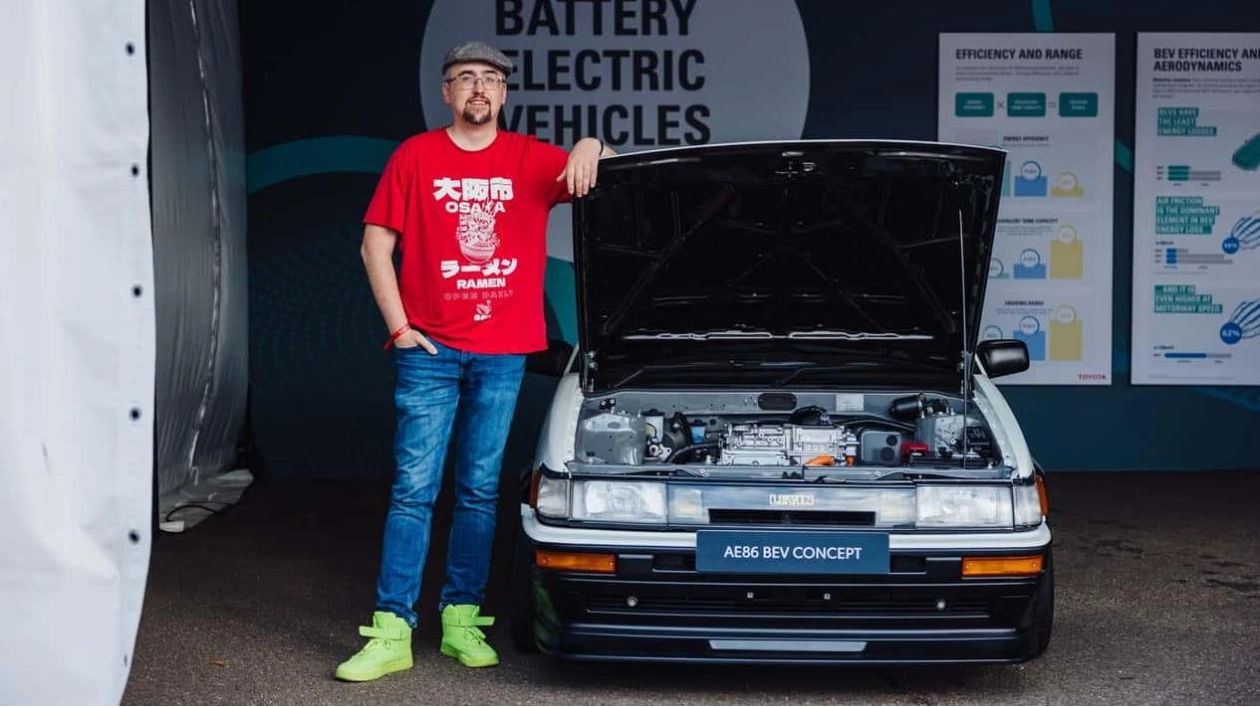JDM car enthusiasts and manga fans are familiar with the Japanese license plate number 13-954, which is prominently displayed on the Toyota Corolla AE86, also known as "Hachi-Roku" (Japanese for eight-six). This vehicle gained fame through the manga series "Initial D," where it is driven by the young Takumi Fujiwara, who has been delivering tofu for his father for years. Takumi inadvertently becomes the drift king of Mount Akina, causing quite a stir in the drift racing community.
The fusion of tofu and Corolla was first depicted in 1995 in "Initial D," a Japanese manga by Shuichi Shigeno, which resonated deeply with car enthusiasts and, arguably, tofu enthusiasts as well. The protagonist, Takumi Fujiwara, a high school student who later attends college, works at a gas station during summer vacation and resides in the mountainous Gunma prefecture in central Japan. He delivers tofu from his father's store in his family's old Corolla, a Toyota Sprinter Trueno (commonly known by its chassis number, AE86), in the early morning hours. As night falls, his black-and-white AE86 transforms into an ultimate racing machine on the nearby mountain roads.
Fujiwara and his fellow racers push their cars and skills to the limit by drifting along the winding roads, deliberately oversteering. The AE86, with its straightforward body and layout, was ideal for tuning and drifting. On the other hand, Takumi is quite reserved and surprised to discover the true nature of his daily driver. He had only ever seen the word Trueno at the rear, as AE86 is merely the internal code name at Toyota. There were actually several AE86 models in the 1980s.
Let's delve into the details: Toyota introduced sporty Corolla models with rear-wheel drive in the summer of 1983. In Japan, these hatchback and notchback coupes were known as Corolla Levin and Sprinter Trueno; in the USA, they were called Corolla GT-S or SR5. On the domestic market, options included an SOHC 1.5-liter engine with 84 horsepower and a 1.6-liter with two overhead camshafts and 128 hp. In North America, these engines produced 74 hp and 114 hp respectively. In Europe, both or just one body variant was offered, depending on the market. In Germany, the notchback version was available from November 1983 under the name Corolla GT with the 1.6-liter four-valve engine, which produced 122 hp and 114 hp with a catalytic converter from the end of 1985. The initial price was DM19,990 ($10,944). Production of the coupe ended in July 1987.
As a fan of the "Initial D" series, I was thrilled when Toyota unveiled the Corolla Levin AE86 BEV Concept last year. It's a classic car with an electric drive, which isn't a groundbreaking idea, as many restomods demonstrate, but Toyota actually installed a manual gearbox in this EV. I had the opportunity to sit in the driver's seat of this car during a Toyota event (though I couldn't drive it). The car is intriguing in its own right. Before the hardcore "Initial D" fans criticize: This is not Takumi's car, at least visually from the A-pillar onwards. The Levin has standard headlights at the front, while the Trueno has pop-up headlights. Toyota showcased the latter as a hydrogen study alongside the Levin BEV. (For "Initial D" aficionados: Wataru Akiyama drove a Levin AE86).
With the hood of the Levin AE86 BEV open, all one sees is a plain electric motor. Its power is supplied by a large battery pack in the rear, marked with a Lexus badge. There are no rear seats, but the weight distribution should be adequate. Toyota announced the letters EV in L-EV-in in 2023. The battery-powered system utilizes an electric motor from a Tundra Hybrid, a battery pack from a Prius plug-in hybrid, and components from other Toyota and Lexus series models. As Group CEO Akio Toyoda, a confirmed car enthusiast, explained: "There is a CO2-neutral way for us as car lovers. We don't want to leave any car lovers behind." So, people like you and me can squeeze past the roll cage and into the snug bucket seat. I don't need the stylish four-point seat belts—after all, I'm not allowed to drive. But when I grasp the handy TRD sports steering wheel and glance at the dashboard, my fingers start to itch. Especially with a robust handbrake (drifting fun!) and a gearshift to my left (of course the electric Levine is right-hand drive!). And yes, you read that right: A gearshift in an electric car. Sure, it only simulates gears, but Toyota is serious about it.
Toyota plans to offer a simulated manual gearbox as an option in its electric vehicles starting from 2026. The automaker will include an additional pedal (whose resistance will likely be generated by an electric motor), a "rev counter," and a gearshift. A gear is engaged as with a normal manual gearbox, but the lever can return to neutral after being operated. Akio Toyoda stated: "It took us almost 50 years to finally install a battery and a motor in the Levin. The original 4AG engine is a treasure, so we removed it with the utmost care. However, the manual gearbox remains untouched. The clutch and gearshift can still be enjoyed." Many car manufacturers aim to transition to battery-powered electric vehicles by around 2030. However, the reality is that we cannot achieve zero emissions by 2050 by simply switching all new car sales to electric vehicles.
This sounds reasonable, Toyoda-san. But how about an electric Neo-Trueno-AE86 with a retro design (a-la the new Renault 5) and a manual gearbox? After all, there's a little Takumi Fujiwara in all of us.






